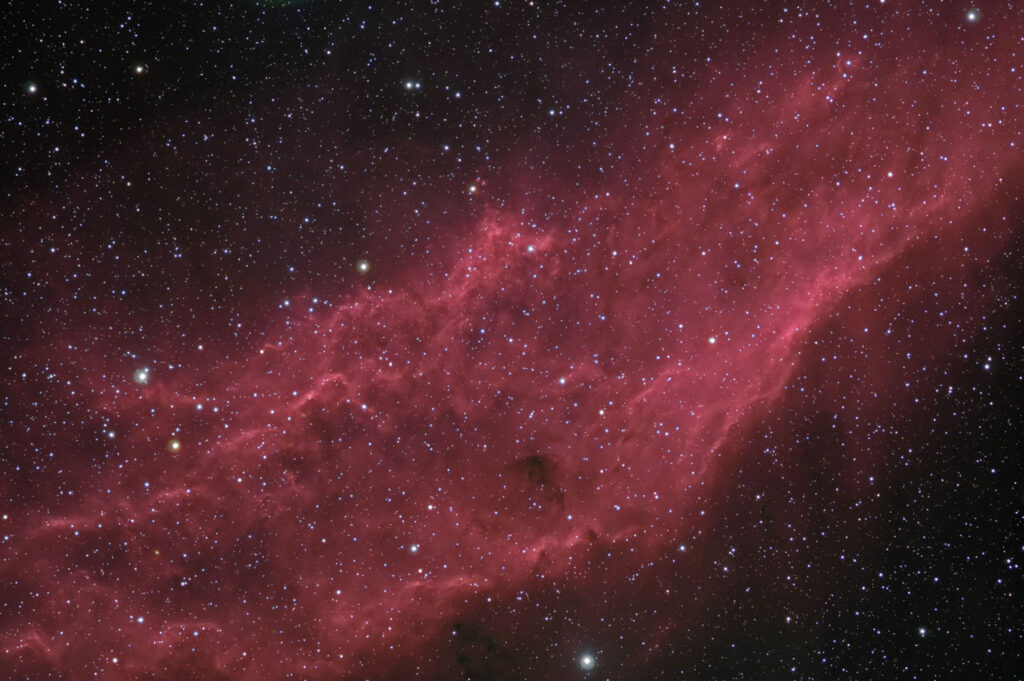NGC 1499
California Nebula, Perseus
- Description
- Technical
- Links
The California Nebula (NGC 1499) is an emission nebula located in the constellation Perseus. It is so named because it appears to resemble the outline of the US State of California on long exposure photographs. It is almost 2.5° long on the sky and, because of its very low surface brightness, it is extremely difficult to observe visually. It can be observed with a Hα filter (isolates the Hα line at 656 nm) or Hβ filter (isolates the Hβ line at 486 nm) in a rich-field telescope under dark skies. It lies at a distance of about 1,000 light years from Earth. Its fluorescence is due to excitation of the Hβ line in the nebula by the nearby prodigiously energetic O7 star, Xi Persei (also known as Menkib). The California Nebula was discovered by E. E. Barnard in 1884.
Telescope: Astro Physics 155EDF f7
Mount: Astro Physics 1200GTO
Camera: SBIG STL-11000M
Guider: SBIG STL-Remote OAG
Ha: 21×10 mins = 420 mins, R: 11×10 mins = 110 mins, G: 11×10 mins = 110 mins, B: 10×10 mins = 100 mins
Total Imaging Time: 12h 20m
Data Imaged remotely over 5 nights during September, October & December 2007.
Data acquisition & Processing by David Churchill.
None

